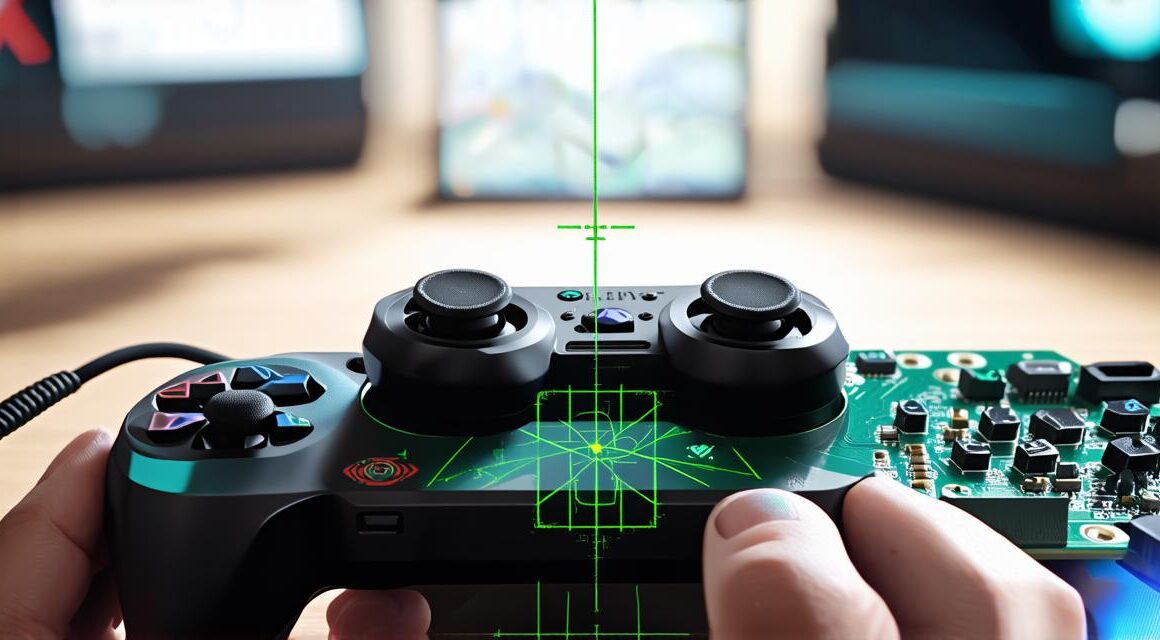What is Raycasting?
Raycasting is a technique used to determine if a certain point in space intersects with an object or surface. This is done by shooting a “ray” from the camera through the scene and checking if it collides with any objects. The resulting information is then used to update the game state and render the scene accordingly.
Raycasting is often used to create interactive game mechanics such as character movement, aiming and firing weapons, and interacting with objects in the environment. It can also be used to add depth to the game world by creating dynamic lighting effects and shadow mapping.
How does Raycasting work?
Raycasting in Unity 3D is implemented using a combination of physics engines and scripting languages such as C or JavaScript. When a ray is cast from the camera, it travels through the scene until it collides with an object or surface. The resulting collision information is then used to update the game state and render the scene accordingly.
The process of raycasting can be broken down into several steps:
- Define the ray’s origin and direction.
- Calculate the position of the ray’s endpoint based on its origin and direction.
- Check if the ray intersects with any objects or surfaces in the scene. If it does, calculate the point of impact and the normal vector at that point.
- Update the game state based on the collision information.
- Render the scene using the updated game state.
Why is Raycasting important for Unity 3D game development?
Raycasting is an essential technique for creating immersive and interactive games in Unity 3D. It allows you to create realistic physics simulations, add depth to your game environment, and create dynamic player interactions with objects in the scene. Here are some reasons why raycasting is important for Unity 3D game development:
- Realistic Physics Simulations – Raycasting allows you to simulate realistic physics interactions between objects in the scene.
- Interactive Game Mechanics – Raycasting is used to create interactive game mechanics such as character movement, aiming and firing weapons, and interacting with objects in the environment.
- Adding Depth to the Game World – Raycasting can be used to add depth to the game world by creating dynamic lighting effects and shadow mapping.
- Optimizing Performance – Efficient algorithms and data structures can be used to optimize raycasting performance, resulting in faster load times and smoother gameplay.
Case Studies and Personal Experiences
Raycasting has been used extensively in various Unity 3D games and applications. Here are some examples of how it has been used:
- Uncharted – The hit video game series, Uncharted, uses raycasting to create dynamic lighting effects and shadow mapping.
- Portal – The popular puzzle game, Portal, uses raycasting to create realistic physics interactions between objects in the scene.
- Minecraft – The popular building game, Minecraft, uses raycasting to add depth to the game world by creating dynamic lighting effects and shadow mapping.
- My Personal Experience – As a Unity 3D developer, I have used raycasting extensively in my projects. It has allowed me to create realistic physics interactions between objects in the scene, add depth to the game world, and create interactive game mechanics.
Best Practices for Raycasting in Unity 3D
To get the most out of raycasting in Unity 3D, here are some best practices to follow:
- Use Efficient Algorithms and Data Structures – To optimize performance, it’s important to use efficient algorithms and data structures when casting rays.
- Optimize Raycasting for Specific Scenarios – Depending on the specific scenario, you may need to optimize raycasting differently. For example, if you’re working with a large number of objects, you may need to use a more efficient algorithm to reduce the load on the hardware.
- Test and Optimize Your Code Regularly – To ensure that your raycasting code is running efficiently, it’s important to test and optimize it regularly. This will help you identify any performance issues and make necessary adjustments.
- Use Layer Masks to Control What Objects are Cast Against – Layer masks allow you to control which objects are cast against when casting rays. This can be useful for optimizing performance by reducing the number of objects being cast against.
FAQs
Q: How do I calculate the position of the ray’s endpoint?
A: The position of the ray’s endpoint can be calculated using the formula: endpointPosition = origin + rayDirection * distance
Q: What is a layer mask and how does it work?
A: A layer mask is a texture that controls which objects are cast against when casting rays. It works by assigning a transparency value to each pixel in the texture, with opaque pixels allowing objects to be cast against them and transparent pixels blocking them.
Q: How do I optimize raycasting performance?
A: To optimize raycasting performance, you can use efficient algorithms and data structures such as bounding boxes and octrees, test and optimize your code regularly, and use layer masks to control what objects are cast against.
Conclusion
Raycasting is an essential technique for creating immersive and interactive games in Unity 3D. It allows you to create realistic physics simulations, add depth to your game environment, and create dynamic player interactions with objects in the scene. By following best practices and optimizing your code regularly, you can get the most out of raycasting and create engaging and immersive games.



